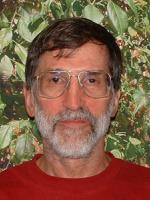
Chris came to the University of Massachusetts in 1988 after getting his Ph.D. in 1984 from the University of New Mexico. Between his M.S. and Ph.D., Chris spent six years as a pilot/geologist with the U.S. Geological Survey in Flagstaff, Arizona working in planetary geology. Chris' interests range from interpreting patterns of basaltic volcanism through planetary science to geoscience education and outreach. His work on basaltic volcanism has concentrated mainly on two areas in Arizona: the Springerville and San Francisco volcanic fields, although his contribution to the "Big Island" map of Hawaii involved work on the northwest flank of Mauna Loa. An outgrowth of his mapping of the Springerville volcanic field resulted in the generation of a computer program he wrote, a digital geologic map for use on the Macintosh computer, the first such distributed by the Geological Society of America on CD. This and other similar programs are encapsulated (a package which includes both the program and data) and contain everything from thematic maps to chemical and geophysical data to digital photos, which range from oblique aerial photos to photomicrographs. This, in turn, lead him to work on programs designed to make geology accessible to the general public, one of which is a program that concentrates on the geology of southwestern New England. His recent work in planetary science has concentrated on creating computer programs to make the planetary geology of the Moon and Mars accessible to the public, and includes QuickTime and QuickTime Virtual Reality movies. In the Spring of 1997, Chris, in collaboration with Tom Murray of the Computer Science Department, was funded by NSF to create a proof-of-concept intelligent turtorial for designing a new super-linked textbook for physical geology. He also received funding to equip a classroom for a teaching the use of computer applications in geosciences, with an emphasis toward creating encapsulated programs for disseminating data-intensive geologic maps and information.